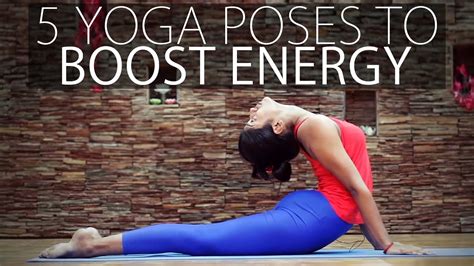Revitalize Your Day: The Best Yoga Breathing Techniques for Energy Boost
In today’s fast-paced world, maintaining energy and focus can be challenging. Fortunately, yoga breathing techniques, also known as pranayama, offer a natural, sustainable solution to reenergize both body and mind. Whether you’re feeling sluggish in the morning, need a midday pick-me-up, or want to enhance your overall vitality, specific breathing exercises can provide that much-needed boost. This article delves into the most effective yoga breaths for enhancing energy, how they work, and practical ways to incorporate them into your daily routine.
Key Concepts of Yoga Breathing for Energy
Before we explore the different techniques, it’s essential to understand the core principles of yoga breathing:
- Pranayama: The regulation of breath, the source of prana (life force energy), through specific techniques that enhance energy flow.
- Energy Channels (Nadis): In yoga philosophy, energy flows through channels called nadis. Balanced breathing activates and purifies these channels, leading to an increase in vitality.
- Mind-Body Connection: Breath is the bridge between the body and mind. Through conscious breathing, you can manage stress, improve focus, and enhance physical energy.
Historical Context: Breathing Techniques in Ancient Yoga Practices
The use of breath to harness energy has roots in ancient India, where yogis refined pranayama as part of their spiritual practice. Texts like the Hatha Yoga Pradipika and the Yoga Sutras of Patanjali describe how specific breathwork cultivates prana and promotes overall well-being. In these texts, pranayama was seen not only as a method for physical invigoration but also as a tool for mental clarity and spiritual awakening.
Historically, pranayama was practiced with an emphasis on discipline and self-regulation, guiding practitioners to a state of inner harmony and sustained energy. Today, these practices are widely adopted for their practical benefits, especially for energy management and stress relief.
Current State: How Yoga Breathing Energizes the Body and Mind
In modern times, many people incorporate pranayama into their daily routines to counteract fatigue, mental fog, and low energy levels. Scientific studies now back the ancient wisdom, showing that controlled breathing improves oxygen intake, calms the nervous system, and enhances focus. Techniques like Kapalabhati and Bhastrika have been proven to increase oxygenation and stimulate the sympathetic nervous system, leading to a natural energy boost.
Practical Benefits
- Increased oxygen flow to the brain and muscles.
- Better regulation of stress hormones like cortisol.
- Improved focus, clarity, and overall cognitive function.
- Activation of the sympathetic nervous system for quick energy surges.
Practical Applications: Yoga Breaths for Energy Boost
Here are some specific pranayama techniques you can use to boost your energy levels throughout the day:
Kapalabhati (Skull Shining Breath)
This dynamic breathing technique involves forceful exhalations and passive inhalations. Kapalabhati is excellent for clearing the mind and energizing the body, often referred to as the “cleansing breath” due to its detoxifying effects.
How to perform Kapalabhati:
- Sit in a comfortable position with your spine straight.
- Inhale deeply through your nose, and then exhale sharply, using your abdominal muscles to force the breath out. The inhalation happens naturally.
- Repeat 20-30 times in rapid succession.
Benefits:
- Boosts energy and mental clarity.
- Increases lung capacity and detoxifies the lungs.
- Clears nasal passages and improves respiratory health.
Bhastrika (Bellows Breath)
Often considered the most stimulating pranayama, Bhastrika involves rapid and forceful inhalations and exhalations, mimicking a bellows pumping air. It is an excellent way to kickstart your day or revive your energy levels when you’re feeling lethargic.
How to perform Bhastrika:
- Sit with a straight spine and place your hands on your knees.
- Take a deep breath in and then forcefully exhale through the nose. Follow this with a powerful inhalation.
- Repeat for 15-20 breaths.
Benefits:
- Activates the sympathetic nervous system, providing a quick energy surge.
- Improves mental alertness and focus.
- Increases oxygen intake and lung capacity.
Nadi Shodhana (Alternate Nostril Breathing)
This balancing technique is perfect for re-centering yourself when you’re feeling overwhelmed or scattered. It helps balance the two hemispheres of the brain, promoting a calm yet energized state of mind.
How to perform Nadi Shodhana:
- Close your right nostril with your thumb and inhale deeply through the left nostril.
- Close the left nostril with your ring finger and exhale through the right nostril.
- Inhale through the right nostril, close it, and exhale through the left.
- Repeat for 5-10 cycles.
Benefits:
- Calms the mind while boosting mental energy.
- Balances the nervous system and reduces stress.
- Improves focus and concentration.
Case Studies: Real-World Applications of Yoga Breathing Techniques
Here are a few examples of how individuals have applied these techniques to enhance their energy and productivity:
| Case Study | Challenge | Technique Used | Outcome |
|---|---|---|---|
| Software Engineer | Midday energy crash | Kapalabhati | Increased focus and energy, improved afternoon productivity |
| College Student | Exam stress and mental fatigue | Nadi Shodhana | Calmer, more focused study sessions with better retention |
| Yoga Instructor | Physical tiredness after long classes | Bhastrika | Boosted energy and ability to conduct back-to-back sessions |
Stakeholder Analysis: Who Benefits from Yoga Breathing Techniques?
While yoga breathing techniques can benefit anyone, different groups may experience varied advantages based on their needs:
- Office Workers: More focus and reduced stress throughout the workday.
- Students: Better cognitive function and memory retention.
- Athletes: Enhanced oxygen flow and performance recovery.
- Entrepreneurs: Sustained energy and mental clarity for decision-making.
Implementation Guidelines: How to Start a Daily Practice
Incorporating pranayama into your daily routine doesn’t have to be complicated. Here are some tips to help you get started:
- Start small: Begin with 5-10 minutes of breathing exercises per day and gradually increase as you become more comfortable.
- Consistency is key: Regular practice yields the best results. Aim for at least 3-5 times per week.
- Morning routine: Practicing in the morning can help set a positive tone for the day.
- Listen to your body: Don’t overdo it. If you feel lightheaded or dizzy, stop and return to normal breathing.
Ethical Considerations: Respecting the Origins of Pranayama
While yoga breathing techniques are widely practiced today, it’s important to respect their cultural and historical roots. Yoga and pranayama originate from ancient Indian traditions and spiritual practices. Practitioners should approach these techniques with mindfulness and an understanding of their deeper purpose beyond physical benefits. Practicing gratitude for the knowledge passed down through generations is a simple yet meaningful way to honor this heritage.
Limitations and Future Research
While yoga breathing offers many benefits, there are limitations to consider:
- Individual Differences: Not all pranayama techniques will work equally for everyone. People with respiratory issues or certain health conditions should consult a healthcare provider before attempting advanced techniques.
- Limited Research: While growing, research into pranayama’s long-term effects is still somewhat limited. More studies are needed to fully understand its physiological and psychological benefits.
- Cultural Sensitivity: As pranayama becomes more mainstream, there’s a risk of cultural appropriation. Practitioners should remain aware of its spiritual roots and avoid commercializing the practice without proper context.
Expert Commentary on Yoga Breaths for Energy Boost
Yoga teachers, health experts, and wellness coaches all agree that incorporating breathing exercises into your daily routine can be transformative. The unique ability of pranayama to enhance both physical energy and mental clarity sets it apart as a simple yet powerful tool for wellness.
Dr. Maya Patel, Yoga Therapist: “I recommend Kapalabhati to my patients struggling with fatigue. It has immediate effects, and I’ve seen significant improvements in their energy levels over time.”
Samantha Greene, Corporate Wellness Coach: “Many of my clients are office workers who feel drained by midday. I encourage them to try Nadi Shodhana or simple breath awareness during breaks. It’s remarkable how a few minutes of mindful breathing can restore their focus.”
In conclusion, the power of pranayama lies not only in its ability to energize the body but also in its capacity to calm the mind and foster resilience. With regular practice, these techniques can help you stay alert, productive, and balanced, no matter what the day throws at you.








